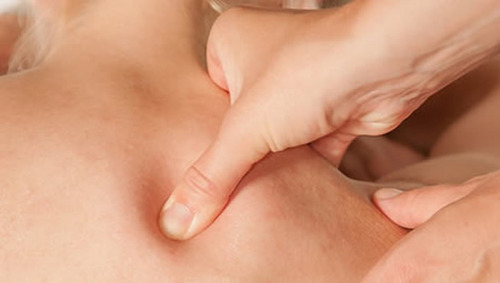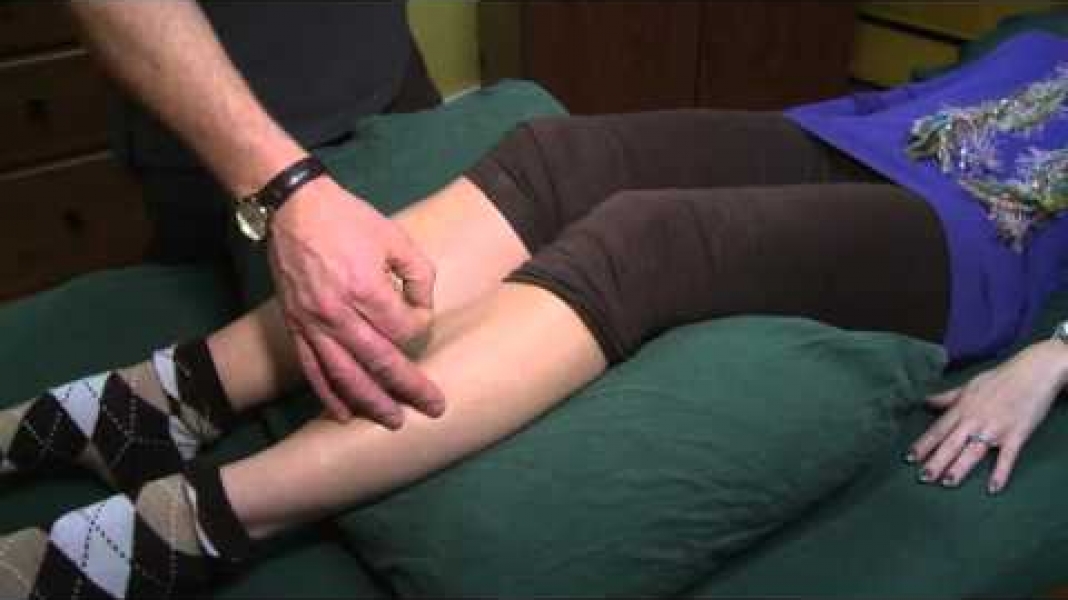
Massage therapy as a form of hands-on “manipulation of soft tissues of the body”(Holey and Cook, 2011) has been around for thousands of years and it has only been in the last few decades that more research attention has turned to massage, its effects on the body and the mechanisms of how it works.

Enhanced Immunity, Decreased Inflammation and Parasympathetic Activity
In research on massage, adequate “moderate” pressure applied during massage techniques seems to be an important component to elicit certain effects of massage, whereas lighter touch or pressure may not have the same effects.
In 2010 Rapaport et al reported that for a single session of moderate pressure Swedish massage for 45 minutes immediate effects were measured in a number of neuroendocrine and immune function measures. The control group in this study received a 45 minute light touch intervention rather than the moderate pressure massage protocol and the results between the two groups were notable. The Swedish massage group showed an increased number of circulating lymphocytes, a decrease in some inflammatory markers in the blood and a decrease in some of the body’s “stress” response markers of cortisol (in blood and saliva) and arginine vasopressin.
Another study that reports massage may reduce inflammation is noted from Crane et al in their February 2012 abstract. They note that the quadriceps muscles of 11 young male subjects also showed reduced inflammation, following a 10 minute massage protocol that was applied after exercise induced muscle damage, when compared to their other non-massaged leg. This type of post-exercise application of massage is quite common in the athletic world and studies like these appear to show support for why athletes might utilize massage to help them train and recover from hard training. Further studies will also provide guiding answers to questions like: how long does the massage need to be, how often, what type of methods work best, etc. On the topic of what triggers and attenuates inflammation pathways it is notable to see that research in the fields of massage, exercise, nutrition and mainstream medicine are all exploring ways to reduce inflammation, especially given its association to chronic conditions.
When considering how massage might mediate these diverse effects on immune and neuro-endocrine function, there are some researchers that feel one mechanism is that massage enhances activity of the parasympathetic nervous system (PNS) which shifts the body’s responses towards rest and restore. Diego and Field (2009) and other researchers suggest that massage pressure on receptors in the skin, fascia and muscles stimulates a vagal (PNS) response which can be measured and monitored by heart rate variability. When the body shifts to parasympathetic activity and out of the fight or flight of sympathetic activity, the repair processes can begin. It is hypothesized that since massage appears to promote a shift in PNS activity, then this may result in more efficient stages of healing and less delay on recovery.
Muscle Tension and Massage: Getting Out of Tight Spots
It is quite common for people to attend massage therapy so they can reduce muscle tension, such as accumulated for someone who sits for extended periods of time without good postural alignment. Tightness in the upper part of the trapezius and the other muscles of the neck would be expected in addition to “knots” or “rope-like” areas which may be sensitive or sore when initially touched. How does massage help alleviate the tension in these areas?
Muscle tension may be described as sustained sarcomere shortening within areas of the muscle. Sustained contracture causes areas of reduced local circulation. This local muscle ischemia stimulates the release of substances (such as prostaglandins) that sensitize nerve fibers in the muscle resulting in sensitivity and tenderness. Stretching and massage methods including moderate/tolerable pressure trigger point techniques and myofascial release can assist in reducing tension in these muscle and fascial areas through changing local circulation and other mechanisms. A 2011 study on neck massage noted that tension does indeed decrease with massage as measured by a reduced H-reflex excitability (alpha motor neuron excitability which is the activity of skeletal muscles) and decreased muscle activity as measured by electromyography (EMG). Notably this study also reported improved range of motion for the subject’s neck movements.
Additionally, the pain reduction part of massage can occur due to reduced muscle tension and via firing the “pain gate”. During massage mechanoreceptors in the skin, muscles and fascia/connective tissue are stimulated by “feeling” the massage techniques, and the mechanoreceptors send their sensory messages along large diameter A-beta fibers to the spinal cord. At the spinal cord the A-beta fibers can win out over pain messages being transmitted which are along smaller fibers and a therefore reduces the painful stimuli messages from getting through. In this way it is suggested that massage activates the pain gate and reduces pain perception.
On a final note, with research continuing to delve into understanding the mechanisms and effects of massage, the next few years will show promising evidence to quantify and explain what many people have already experienced with massage. That is, massage is a valuable therapeutic method as part of a well rounded health promotion, exercise and rehabilitation plan.
References are available upon request.




